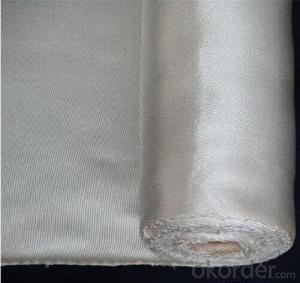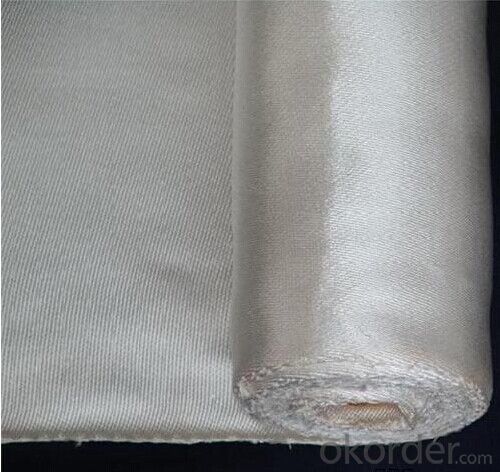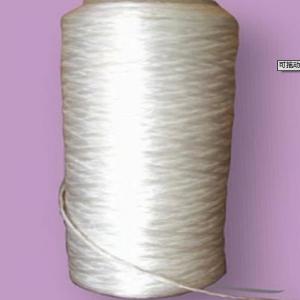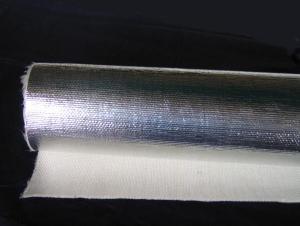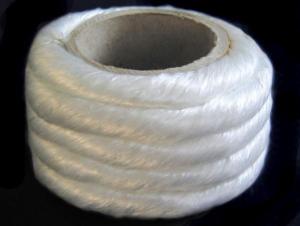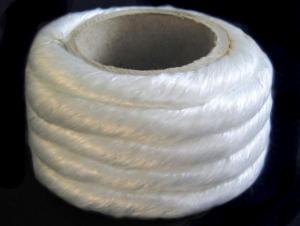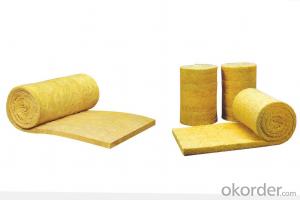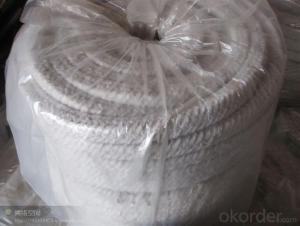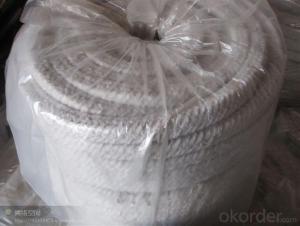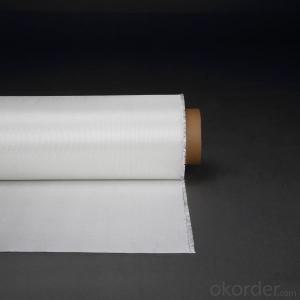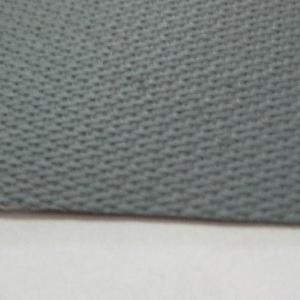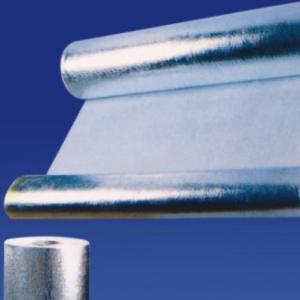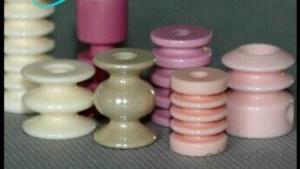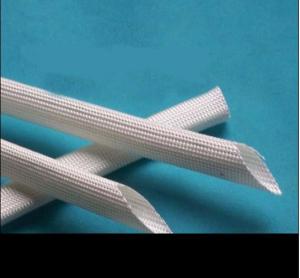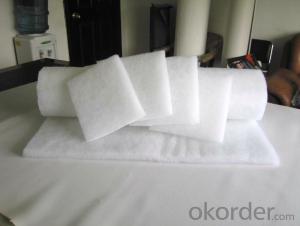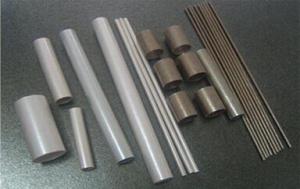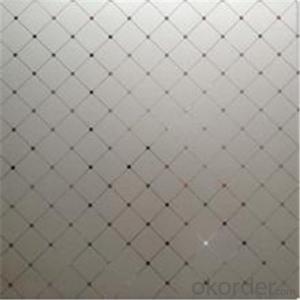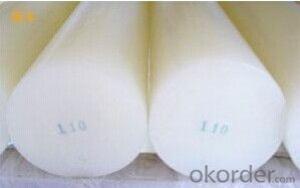Glass Fiber Textiles Alumina Coated Glass Fiber Fabric Product
- Loading Port:
- Qingdao
- Payment Terms:
- TT OR LC
- Min Order Qty:
- 500 m²
- Supply Capability:
- 3000 m²/month
OKorder Service Pledge
OKorder Financial Service
You Might Also Like
Alumina Coated Fiberglass Fabric is made of important fiberglass as the wearing material to plain knit or specially knit into superior fiberglass basic cloth,coat it with fine PTFE resin then make it into various of Teflon high temperature resistance cloth in different thickness and width .
Besides ,having the grate capability of antisepsis and heat resistant, the surface is more smoothly and it has better non-viscidity capability. It could be used in ordinary industry field, and has better predominance on being used as plastic module separating, and separating patch, gasket, separating module of some products.
PRODUCT FEATURES AND BENEFITS*
* stable dimension, high intensity, elongation coefficient less 5%
* good temperature resistance,24 hours working temperature -70~260oC
* low coefficient of friction and dielectric constant, good insulating ability
* non-stick, easy to clear stains and adhensive on the surface
* good chemical resistance, it can resist all most of chemical medicines, acids, alkalis and salt, it is fireproof, lower in aging.
*With excellent heat resistance, rub resistance, high insulation properties, high tensile strength, oil resistance, corrosion resistance, flame resistance, non-halogen properties
Model | Thickness (mm) | Color | Width (mm) | Normal Weight (g/m²) | Tensile strength (N/cm) | Peeling strength (N/25mm) | Heat resistance (℃) |
CT - TF008 | 0.08 |
Brown *White *Black *Beige
| 1250 | 150 | 180/140 | 6.5-9.5 | -60~260 |
CT-TF013 | 0.13 | 1250 | 260 | 290/260 | 6.5-9.5 | -60~260 | |
CT-TF015 | 0.15 | 1250 | 300 | 310/260 | 6.5-9.5 | -60~260 | |
CT-TF018 | 0.18 | 1250 | 330 | 400/260 | 6.5-9.5 | -60~260 | |
CT-TF025 | 0.25 | 2800 | 450 | 550/500 | 6.5-9.5 | -60~260 | |
CT-TF035 | 0.35 | 3200 | 700 | 650/600 | 6.5-9.5 | -60~260 | |
CT-TF040 | 0.40 | 3500 | 780 | 820/500 | 6.5-9.5 | -60~260 | |
CT-TF065 | 0.65 | 4000 | 1100 | 880/730 | 6.5-9.5 | -60~260 | |
CT-TF09 | 0.9 | 4000 | 1500 | 1050/950 | 6.5-9.5 | -60~260 |
- Q: Can glass fiber textiles be used in car body panels?
- Yes, glass fiber textiles can be used in car body panels. Glass fiber textiles are commonly used in the automotive industry to reinforce and strengthen various components, including car body panels. The use of glass fiber textiles in car body panels provides improved strength, durability, and lighter weight compared to traditional materials, making it a popular choice for manufacturers.
- Q: Are glass fiber textiles resistant to color fading?
- Yes, glass fiber textiles are typically resistant to color fading. This is because glass fibers are inherently resistant to UV radiation, which is one of the main causes of color fading in textiles. Additionally, glass fibers do not easily absorb or retain dyes, which helps to maintain the original color of the textile over time. This makes glass fiber textiles a durable and long-lasting option for applications where colorfastness is important, such as outdoor furniture, awnings, or automotive interiors.
- Q: Can glass fiber textile be used in sporting equipment?
- Yes, glass fiber textile can be used in sporting equipment. It is commonly used in the construction of items such as tennis rackets, hockey sticks, and bicycle frames due to its high strength, durability, and lightweight properties. Glass fiber textile provides excellent stiffness and flexibility, making it suitable for enhancing performance and improving player control in various sports.
- Q: Are glass fiber textiles suitable for protective clothing?
- Yes, glass fiber textiles are suitable for protective clothing. They offer excellent resistance to heat, fire, and chemicals, making them an ideal choice for industries where workers are exposed to these hazards. Additionally, they have high strength and durability, providing effective protection against cuts and abrasions.
- Q: Can glass fiber textile be used in energy storage?
- Yes, glass fiber textile can be used in energy storage systems. Glass fiber textiles, also known as fiberglass textiles, have excellent thermal and mechanical properties, making them suitable for various applications, including energy storage. In energy storage, glass fiber textiles can be used as reinforcement materials in the construction of battery electrodes. They provide structural integrity and support to the electrodes, preventing them from deformation or damage during charging and discharging cycles. Glass fibers also have the advantage of being chemically inert, which ensures compatibility with different types of battery chemistries. Furthermore, glass fiber textiles can serve as separators in energy storage devices such as supercapacitors. The porous nature of the textile allows for easy ion flow and prevents short circuits, enhancing the overall performance and safety of the energy storage system. Glass fiber textiles are lightweight and have a high surface area, providing ample space for the storage of energy. This characteristic is particularly beneficial in applications where weight and volume constraints are critical, such as portable electronic devices or electric vehicles. In conclusion, glass fiber textiles possess the necessary properties to be effectively utilized in energy storage systems. Their thermal and mechanical stability, chemical inertness, and lightweight nature make them a viable option for enhancing the performance and safety of energy storage devices.
- Q: How do glass fiber textiles affect the moisture management of fabrics?
- Fabrics can be significantly influenced in terms of moisture management by glass fiber textiles. These textiles, also known as glass fiber reinforcements, are created by weaving together thin strands of glass to form a fabric. An important benefit of glass fiber textiles is their ability to repel moisture. These fibers are non-absorbent, meaning they do not retain water. Instead, they allow moisture to pass through the fabric, effectively managing and controlling moisture levels. This is particularly advantageous in situations where moisture accumulation can cause discomfort or damage, such as in sports clothing or outdoor gear. Additionally, glass fiber textiles possess excellent wicking properties. Wicking refers to a fabric's capacity to draw moisture away from the body and towards the surface, where it can evaporate more easily. Due to their high surface area, glass fibers quickly absorb moisture and transport it away from the skin. This helps to keep the wearer dry and comfortable, even during intense physical activity. Moreover, glass fiber textiles are frequently utilized as a component in composite materials, like those used in constructing buildings or manufacturing automotive parts. In these applications, glass fiber reinforcements can enhance the overall strength and durability of the fabric, while still effectively managing moisture. This is particularly crucial in environments exposed to high levels of moisture, such as bathrooms or swimming pools. In conclusion, glass fiber textiles have a positive impact on moisture management in fabrics. They repel moisture, possess excellent wicking properties, and can be used to improve the strength and durability of fabrics. Whether in clothing, outdoor gear, or industrial applications, glass fiber textiles play a vital role in ensuring comfort and performance while effectively managing moisture.
- Q: How do glass fiber textiles compare to synthetic fiber textiles?
- Glass fiber textiles and synthetic fiber textiles have some similarities, but also key differences. Both types of textiles are man-made materials, offering durability and strength. However, glass fiber textiles have the advantage of being highly heat-resistant, making them suitable for applications such as insulation in high-temperature environments. On the other hand, synthetic fiber textiles, such as polyester or nylon, are often more flexible, lightweight, and water-resistant, making them ideal for a wide range of uses, including clothing and outdoor gear. Ultimately, the choice between glass fiber and synthetic fiber textiles depends on the specific requirements of the intended application.
- Q: How do glass fiber textiles contribute to flame resistance?
- Flame resistance is achieved by glass fiber textiles in several ways. Firstly, glass fibers possess a high melting point, typically reaching around 1500 degrees Celsius. Consequently, they are less prone to ignition or burning when compared to alternative textile materials like natural fibers or synthetic substances such as polyester or nylon. This inherent flame resistance is a result of the glass fibers' elevated melting point. Secondly, the structure of glass fibers acts as a barrier to the spread of flames. The fibers are tightly interwoven, creating a dense fabric that proves challenging for flames to penetrate. Consequently, the fire is hindered from spreading and consuming the textile material. Furthermore, when glass fiber textiles are exposed to flames, they do not emit flammable gases. In contrast to certain synthetic materials that release toxic fumes and gases when burned, glass fibers remain relatively inert, thus not contributing to the propagation of fire. Additionally, glass fiber textiles possess a low thermal conductivity, meaning they are not efficient heat conductors. This characteristic aids in reducing the transfer of heat from the flame to the fabric, thereby minimizing the risk of ignition. Lastly, flame retardant chemicals can be applied to glass fiber textiles to enhance their flame resistance properties. These chemicals can be incorporated during the manufacturing process or applied as a post-treatment, further enhancing the fabric's ability to resist flames and diminishing the chances of ignition. In conclusion, the combination of the inherent properties of glass fibers and the option to treat them with flame retardants renders glass fiber textiles highly effective in contributing to flame resistance.
- Q: How do glass fiber textiles resist insects?
- Glass fiber textiles resist insects because the material is not edible or appealing to them, and its smooth surface makes it difficult for insects to climb or attach their eggs. Additionally, glass fiber textiles do not provide a suitable environment for insects to thrive due to their lack of moisture retention and resistance to mold or mildew.
- Q: Can glass fiber textiles be used in the production of backpacks and bags?
- Glass fiber textiles, commonly referred to as fiberglass, possess the qualities of being lightweight, robust, and long-lasting materials that can effectively offer exceptional support and safeguard for the production of backpacks and bags. These materials demonstrate a high degree of tensile strength, which implies their capability to endure heavy loads without succumbing to breakage or tearing. Moreover, glass fiber textiles exhibit commendable resilience against chemicals, moisture, and UV radiation, rendering them apt for outdoor utilization. By weaving or laminating them with other fabrics, their properties can be augmented, resulting in the creation of a distinctive design. Consequently, glass fiber textiles present a dependable and adaptable alternative for the manufacturing of backpacks and bags.
Send your message to us
Glass Fiber Textiles Alumina Coated Glass Fiber Fabric Product
- Loading Port:
- Qingdao
- Payment Terms:
- TT OR LC
- Min Order Qty:
- 500 m²
- Supply Capability:
- 3000 m²/month
OKorder Service Pledge
OKorder Financial Service
Similar products
Hot products
Hot Searches
Related keywords
